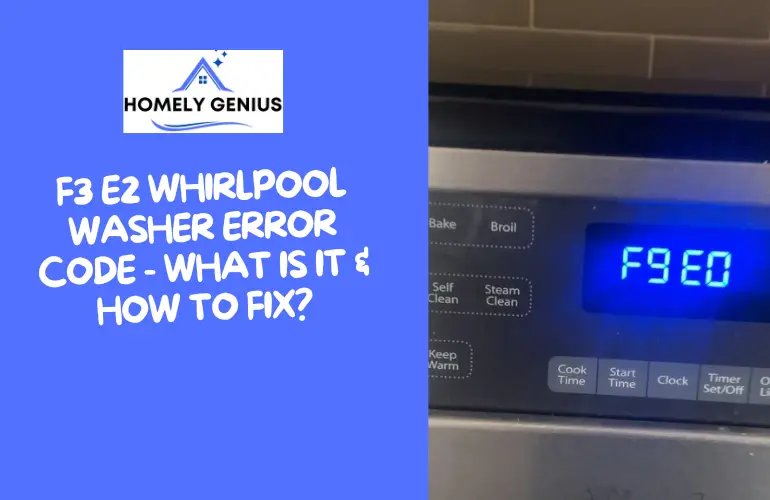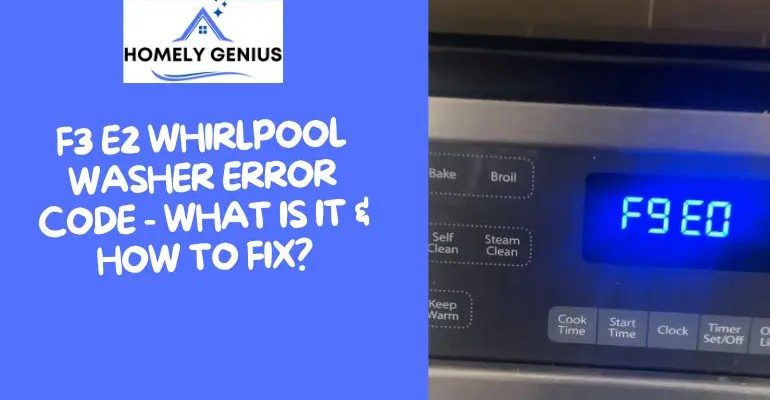
Error codes are like your washing machine’s way of saying, “Hey, something’s not right here!” The E2 code is specifically related to a drainage problem. Think of your washing machine’s drainage system as a network of pipes and pumps that whisk the used water away. When there’s a hiccup in that system, your Whirlpool washing machine will give you a heads-up with the E2 error code. Now, let’s dive into what might be causing this error.
Understanding the E2 Error Code
The E2 error code is most commonly triggered by drainage issues. Think of it like a roadblock in a bustling city—something is preventing the water from leaving your washer like it should. When water doesn’t drain properly, it can lead to several problems, like soggy clothes or even a washing machine that refuses to start the next cycle. It’s a bit like trying to drive a car with a flat tire; it just isn’t going to work the way you want it to.
One common cause is a clog somewhere in the drainage system. Over time, bits of fabric, lint, or even small items that accidentally get left in pockets can accumulate and cause a blockage. Imagine trying to drink through a straw that’s clogged with a piece of food—it’s nearly impossible and frustrating! Similarly, your washing machine struggles to expel water when there’s a clog.
Another possible culprit could be a kinked or improperly positioned drain hose. Picture a garden hose that’s got a kink in it; the water flow is reduced or even stopped completely. When the drain hose of your washing machine is not positioned correctly or is kinked, the water can’t flow out smoothly, causing the E2 error to pop up.
Checking for Clogs
So, how do you go about checking for clogs? First, ensure your washing machine is turned off and unplugged—safety first! Once you’ve done that, you can start inspecting the drain hose. Gently remove it from its position and check for any visible obstructions. Imagine you’re looking down that pesky straw—be on the lookout for anything that could be blocking the water’s path.
If you spot a blockage, you can try flushing it out with water or using a long object to dislodge it. Just like you’d clear out a blocked sink with a plunger, sometimes giving the obstruction a nudge is all it takes. If the blockage is stubborn, you might need to remove the hose completely and give it a thorough clean.
Additionally, check the filter or pump area, which can also accumulate debris over time. Think of this like cleaning out a vacuum cleaner; it requires a little maintenance now and then to ensure everything is running smoothly. Once everything is clear, reattach the hose and see if the error code has disappeared. If not, it might be time to consider other options.
Ensuring Proper Drain Hose Position
Now that clogs are out of the way, let’s ensure the drain hose is properly positioned. The hose should have a smooth, gradual path to the drain with no kinks or sharp bends. Think of it like a fun slide at a water park—the smoother and straighter it is, the faster everything flows through.
If the hose is too long, it might be sagging, which can cause water to back up. In this case, try to secure the hose at a proper height using clips or ties. While it might seem trivial, this small step can prevent the E2 error from appearing in the future.
Once you’ve checked and adjusted the hose, run a test cycle with a small load of laundry. Keep an eye on the machine to see if the E2 error crops up again. If all goes well, you’ve successfully navigated this issue!
Preventing Future E2 Errors
Now that you’ve tackled the E2 error code, let’s talk about keeping future errors at bay. Regular maintenance can do wonders in preventing small issues from turning into major headaches. Much like brushing your teeth prevents cavities, a little upkeep goes a long way with your washing machine.
Start by regularly cleaning the washing machine’s filter to avoid buildups that can lead to clogs. You might be surprised at what collects there over time—like finding coins or buttons in your couch cushions! Also, make it a habit to check pockets before doing laundry. Small items like coins, tissues, or paper can cause blockages if they escape into the machine.
Finally, ensure that the washing machine is on a level surface. An unbalanced washer can cause more stress on its components, potentially leading to errors. Just like you wouldn’t want to sit on a wobbly chair, your washing machine needs stability to function properly.
Regularly check the drain hose for kinks and reposition it if necessary. A little attention here and there will keep your washer spinning smoothly for the long haul.
By understanding the E2 error and taking these preventative measures, you’ll keep your Whirlpool washing machine in top shape. After all, who wants to deal with unexpected breakdowns when there’s laundry to be done? With these insights, you’re ready to conquer the E2 error like a pro!
